Ancient manuscripts on display for the first time
Endless Stories opens September 28, 2024 at Cambridge University Library
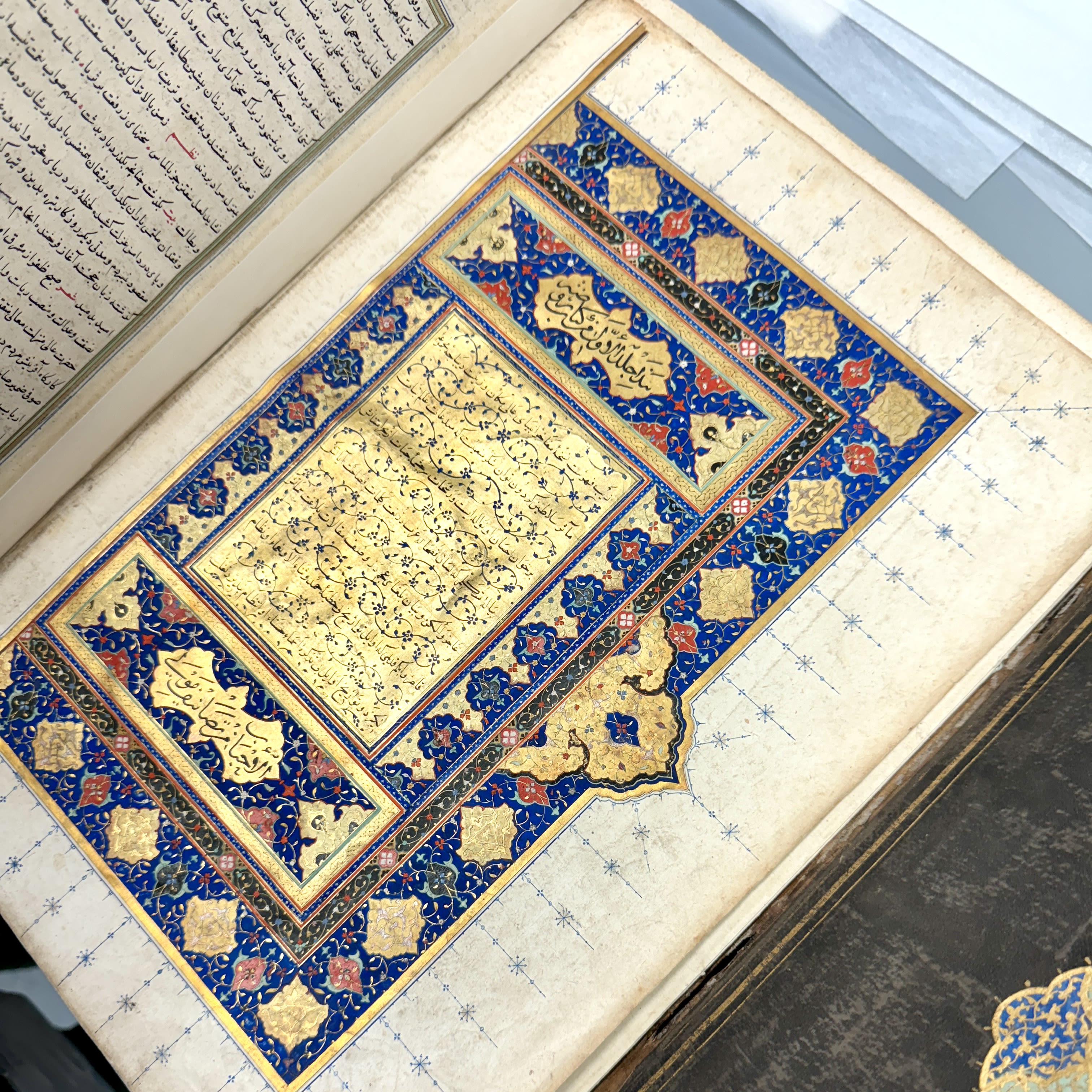
Very few early Malay manuscripts have survived, making the ones collected by Erpenius of exceptional importance. This is the oldest known commentary on the Qur’an in the Malay language. It is possibly one of the first manuscripts produced for the study of Islam and Sufism in South-East Asia.
Very few early Malay manuscripts have survived, making the ones collected by Erpenius of exceptional importance. This is the oldest known commentary on the Qur’an in the Malay language.
Anew exhibition at Cambridge University Library is putting on display exceptionally rare manuscripts from Asia and North Africa, the majority of which are believed to be going on show for the very first time.
Through these works, Endless Stories reveals how knowledge travelled thousands of miles, over hundreds of years, during the Middle Ages and the Early Modern period.
The exhibition runs from September 28 – February 22, 2025 and is free to the public.
Objects going on display include one of the oldest surviving prose texts in Persian - a 730-year-old commentary on parts of the Qur’an from the Persianate World.
Visitors can also see the oldest known Malay Qur’anic Commentaries from Aceh, Indonesia; a Sufi book on morality and ethics, which survived a devastating earthquake in Akhsikath (Uzbekistan) in 1620; and the poetic works of Rumi, Attar, and other celebrated literary figures.
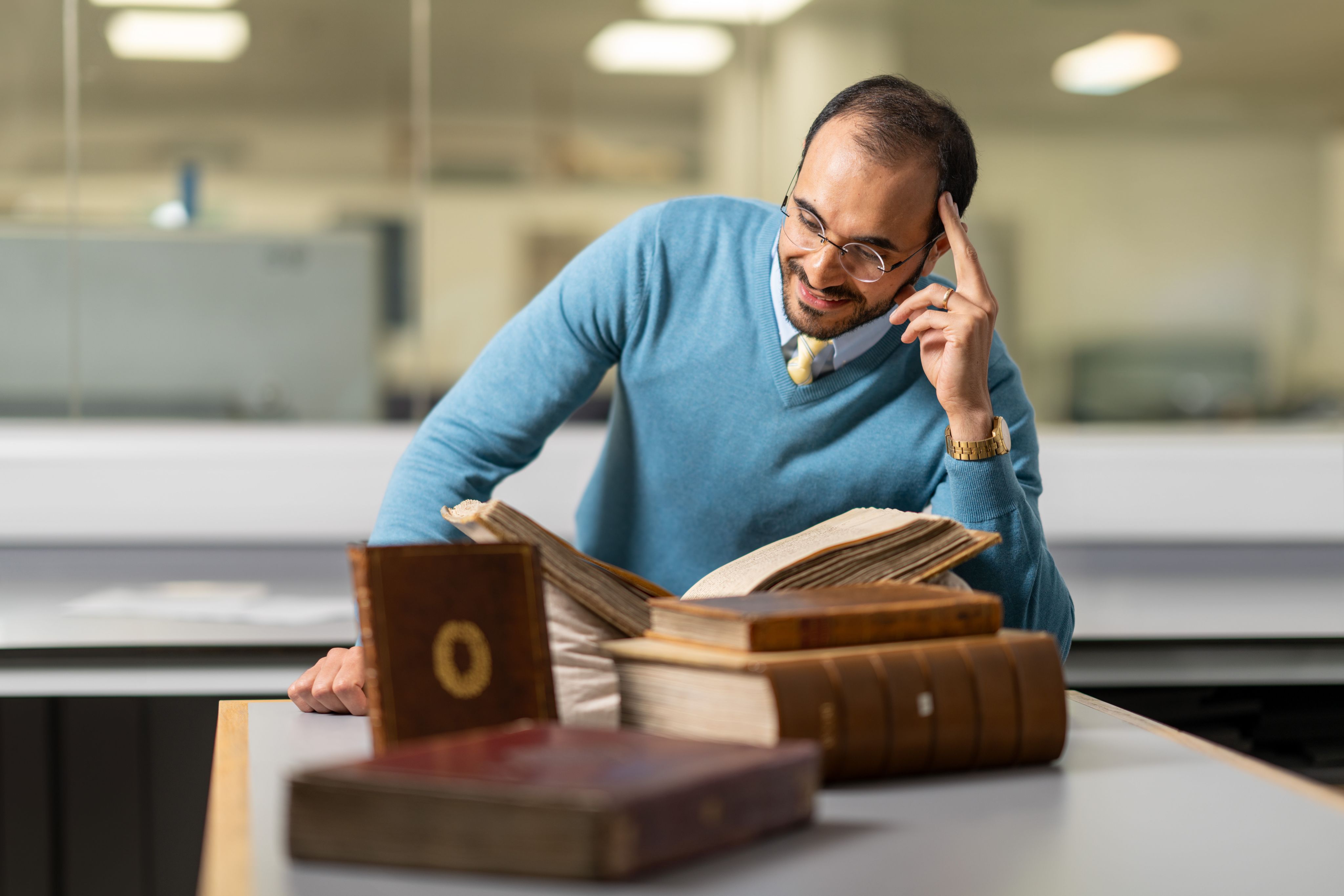
A dazzling array of languages
The rare manuscripts are written in a dazzling array of languages, covering a wide range of subjects including literature, science, religion, and philosophy, and were originally collected by the Dutch scholar and printer Thomas van Erpe, also known as Erpenius (1584-1624).
Erpenius aimed to show that the study of Islamic and Asian manuscripts was as important as that of Latin, Greek, Syriac, and Hebrew.
More than 15 languages and scripts feature in the Endless Stories exhibition, including Arabic, Aramaic, Classical Chinese, Hebrew, Javanese (hanacaraka and pégon), Malay (Jawi), Persian, Syriac (Karshuni), Telugu, Turkish (Ottoman Turkish and Turkic), and Yiddish.
The languages and scripts featured in Endless Stories
The languages and scripts featured in Endless Stories
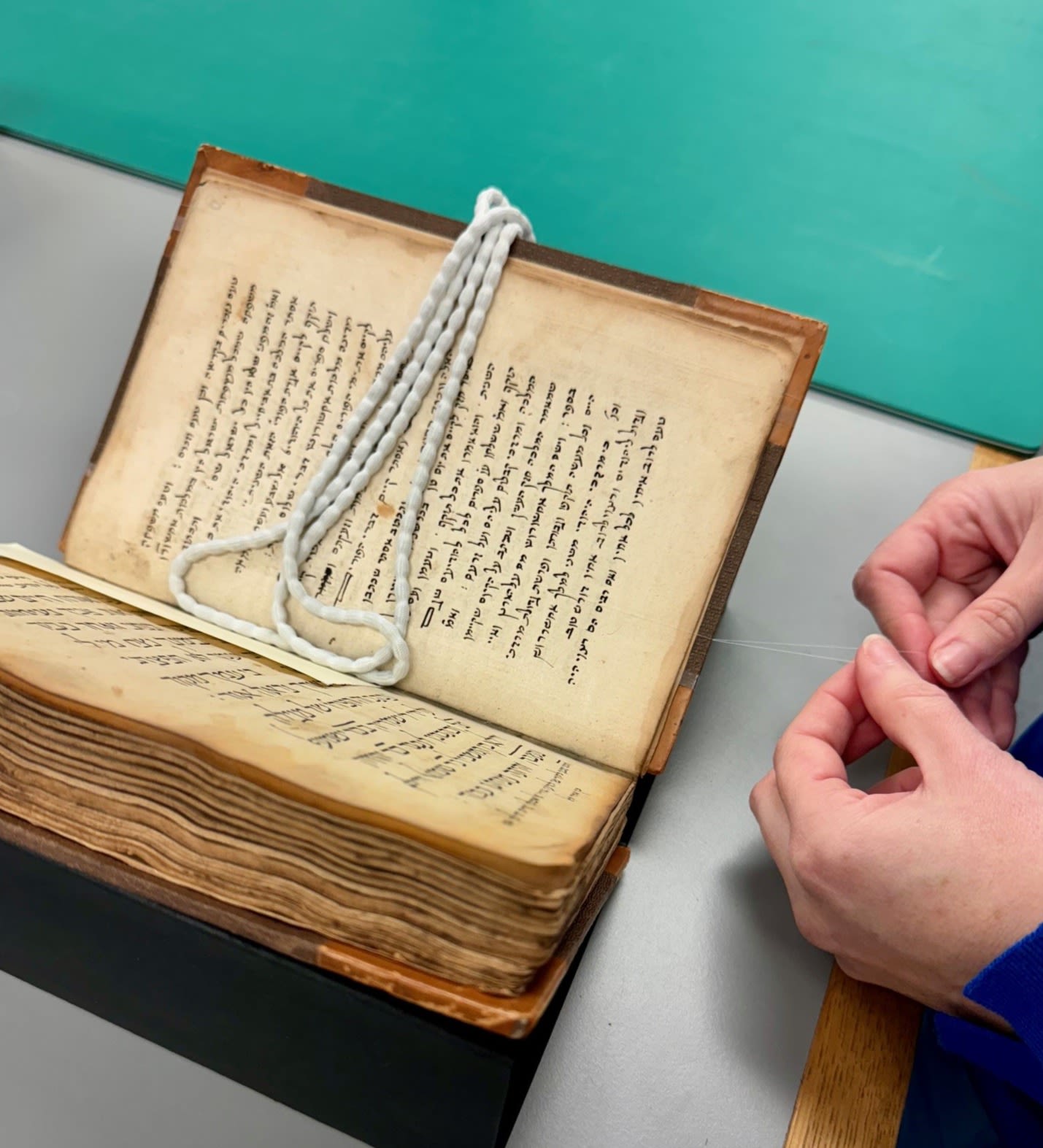
A map of Europe, Asia and Africa showing where the manuscripts featured in the exhibition originated.
A map of Europe, Asia and Africa showing where the manuscripts featured in the exhibition originated.
“In an era focused on the Bible and the Classical World, with an emphasis on Greek, Latin, and Hebrew, Erpenius believed that true global understanding could only be achieved through the study of world languages.
“While some of his contemporaries wielded their knowledge of Arabic to challenge Islam and Muslim culture, Erpenius demonstrated a genuine interest in the connections of language and faith.
“His passion led him to build one of the great pioneering collections of manuscripts in Arabic, Malay, Persian, Turkish, Syriac, Hebrew and other languages.
“Erpenius paved the way for an inclusive approach to religious and textual studies, placing Islamic and non-Islamic Asian materials alongside European and Biblical literature.”
Exhibition curator Dr Majid Daneshgar
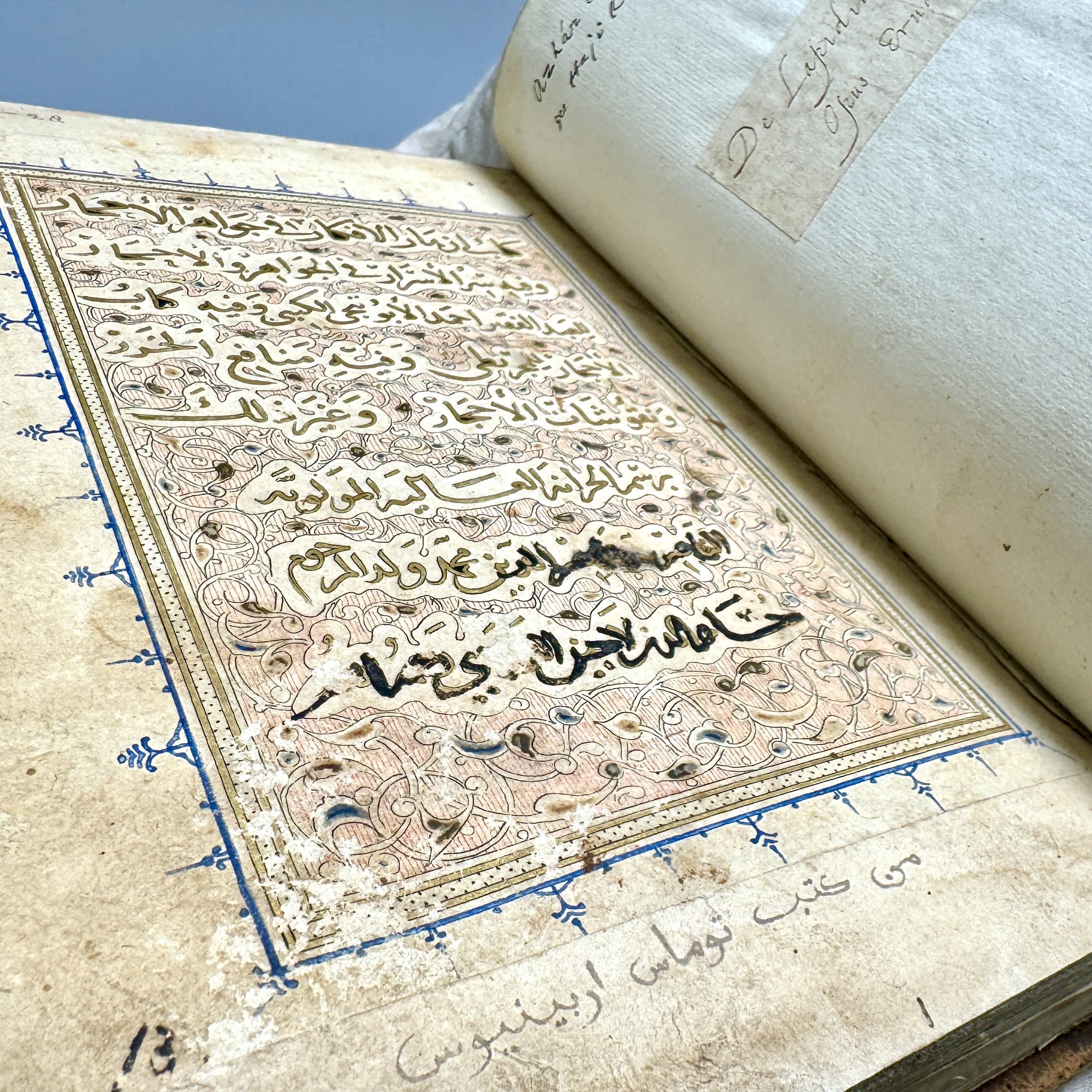
The collection changes hands
A year after Erpenius’s death from the plague at the age of 40, his manuscripts were purchased from his widow for £500 in 1625 by George Villiers, the Duke of Buckingham – a courtier to King James VI and I, and his son Charles I. They became known as the ‘Duke’s Library’.
Following the Duke’s assassination in 1628, his widow, Katherine Villiers, Duchess of Buckingham, became the first woman to donate manuscripts to Cambridge University Library.
Portrait of Thomas Van Erpe in Illustrium Hollandiae et Westfrisiae ordinum Alma Academia Leidensis (1614)
Portrait of Thomas Van Erpe in Illustrium Hollandiae et Westfrisiae ordinum Alma Academia Leidensis (1614)
In 1632, Cambridge University Library was transformed with the acquisition of Erpenius's 92 manuscripts at a time when the library’s collection numbered only around 1,000 items (the library today holds ten million books and other objects).
al-Ṣiḥāḥ fī al-Lugha by Abū Naṣr Ismāʿīl b. Ḥammād al-Jawharī Fārābī. Baghdad, 1274. This manuscript demonstrates how knowledge and manuscripts moved across the world before the 17th century. It is a royal copy of an Arabic book of language, vocabulary and grammar.
al-Ṣiḥāḥ fī al-Lugha by Abū Naṣr Ismāʿīl b. Ḥammād al-Jawharī Fārābī. Baghdad, 1274.
Watch our short film about the Endless Stories exhibition at Cambridge University Library
“Ancient manuscripts are time machines, they take us back to other worlds.
“The youngest object in this exhibition is 400 years old, the oldest over 700. The age range is long, the locations varied, and the number of languages extraordinary.
“There are too many favourites to mention. A 700-year-old copy of the Gospels in Arabic gives a sense of how Christians in Alexandria practised their faith, while a Royal copy of an Arabic book of language, dated 1274, shows the type of material the rulers of ancient Shiraz (modern day Iran) had in their library.
“What connects all these things is a love of learning and language and its interconnectedness.
“Erpenius studied Arabic alongside his friend and collaborator Aḥmad ibn Qāsim al-Ḥajarī; one book in the exhibition has comments and statements from both, in Arabic and Latin. They studied together as students might do now, their thoughts and learning unravelling before our eyes.”
Dr Chris Burgess, Head of Exhibitions and Public Programmes
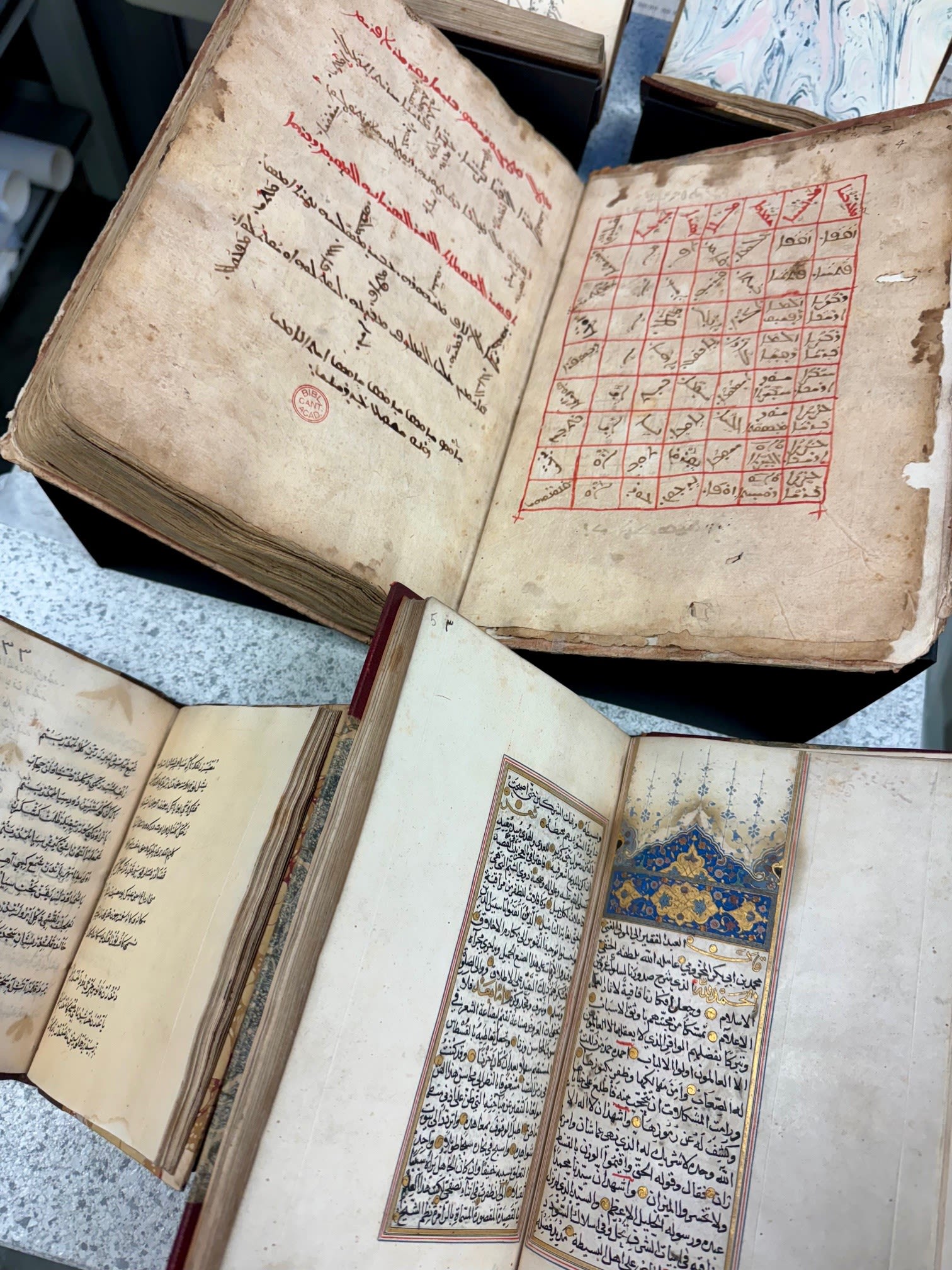
The legacy of Erpenius
Erpenius’s legacy is derived from both his collection of manuscripts and the publication of his Arabic grammar book Grammatica Arabica in 1613, which remained a primary reference for European scholars, merchants and travellers for several centuries.
A first edition copy of Grammatica Arabica is going on display in Endless Stories. Erpenius also founded a printing press to reproduce texts in Arabic for the European book market.
Most libraries in the West acquired his books for their collection.
Despite his global curiosity, Erpenius never left Europe. In 1611, he left France and travelled to Venice with the intention of travelling to Istanbul first by boat and then overland, but the ship never left. He acquired more books in Venice, where cultures met and traders from around the world gathered.
The collection highlights how books were created and shared throughout the connected world in the 17th century. Many of the works were newly written when Erpenius acquired them, while others were already centuries old.
丹溪心法附餘 (Dan xi xin fa fu yu), compiled by方廣 (FANG Guang) ; revised by吳國倫 (WU Guolun), [1536?]. As trade routes with China opened in the 17th century, Chinese books began arriving in Leiden. This medical text is possibly the earliest Chinese book to arrive in the collection. It was printed in the 16th century, copied from a 13th–14th century source. This page includes herbal recipes for treating colds.
丹溪心法附餘 (Dan xi xin fa fu yu), compiled by方廣 (FANG Guang) ; revised by吳國倫 (WU Guolun), [1536?]
“I love the manuscripts in Endless Stories because they wear their history. The detailed research that has gone into the exhibition has revealed through whose hands the books passed, allowing us a fleeting glimpse of who read them and why.“
Dr Chris Burgess, Cambridge University Library
Endless Stories: Manuscripts, knowledge and translation in the 17th century is a free exhibition which opens to the public at Cambridge University Library from Saturday, September 28, 2024 until February 22, 2025.
Published September 26, 2024
Photos and film by Lizzie Woodman, Blazej Mikula, Cambridge University Cultural Heritage Imaging Lab, and Cambridge University Library Conservation Department
The text in this work is licensed under a Creative Commons Attribution-NonCommercial-ShareAlike 4.0 International License








